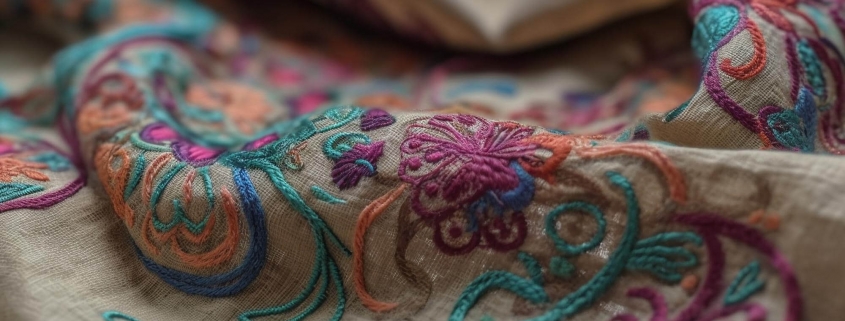Choosing the Perfect Canvas: Exploring the Best Fabrics for Digital Embroidery
Selecting the right fabric is crucial when it comes to digital embroidery, as different materials can greatly impact the final result. The choice of fabric influences the appearance, durability, and overall quality of the embroidered design. Here are some popular fabrics that work well for digital embroidery:
- Cotton:
- Advantages: Cotton is a versatile and widely used fabric for digital embroidery. It has a smooth surface that allows for precise stitching and vibrant color representation. Cotton is breathable and comfortable, making it suitable for a variety of applications, including apparel and home decor.
- Considerations: It’s essential to choose a high-quality cotton fabric to avoid issues like shrinkage or distortion during the embroidery process.
- Linen:
- Advantages: Linen is a durable and natural fabric that adds a touch of elegance to embroidered designs. It has a textured surface that can enhance the visual appeal of the embroidery. Linen is often chosen for decorative items, such as tablecloths and napkins.
- Considerations: Linen can be prone to wrinkles, and it may require careful handling to prevent distortion during embroidery.
- Polyester:
- Advantages: Polyester is a synthetic fabric known for its durability and resistance to wrinkles and fading. It provides a smooth surface for embroidery and is often chosen for items that require a more resilient material, such as sportswear or outdoor fabrics.
- Considerations: While polyester is durable, it may lack the breathability of natural fibers like cotton. Some people may find it less comfortable for certain applications.
- Canvas:
- Advantages: Canvas is a sturdy, heavyweight fabric that works well for larger and more robust embroidery projects. It’s commonly used for items like tote bags, backpacks, and home decor items. The texture of canvas can add depth to the embroidered design.
- Considerations: Due to its weight, canvas may not be the best choice for lightweight garments. Additionally, the thickness of the fabric may require adjustments to the embroidery machine settings.
- Denim:
- Advantages: Denim is a durable and versatile fabric that can add a casual and trendy feel to embroidered designs. It’s commonly used for jackets, jeans, and other casual apparel items. Denim’s thickness and texture provide a unique canvas for embroidery.
- Considerations: Like canvas, denim is a heavier fabric that may require machine adjustments. It’s important to use appropriate needles and threads to ensure smooth embroidery on denim.
- Silk:
- Advantages: Silk is a luxurious and smooth fabric that can add elegance to embroidered designs. It’s often chosen for more delicate and high-end applications, such as eveningwear and lingerie.
- Considerations: Silk requires careful handling, and the choice of stabilizers and embroidery techniques may need to be adjusted to accommodate the delicate nature of the fabric.
- Fleece:
- Advantages: Fleece is a soft and warm fabric commonly used for blankets, jackets, and activewear. It provides a cozy canvas for embroidery and is often chosen for personalized gifts.
- Considerations: Fleece can have some stretch, so it’s important to use appropriate stabilizers to prevent distortion during embroidery.
When choosing a fabric for digital embroidery, it’s essential to consider the intended use of the finished product, the complexity of the design, and the characteristics of the fabric itself. Testing embroidery on a small sample of the chosen fabric before starting a larger project can help ensure a successful outcome.





Leave a Reply
Want to join the discussion?Feel free to contribute!